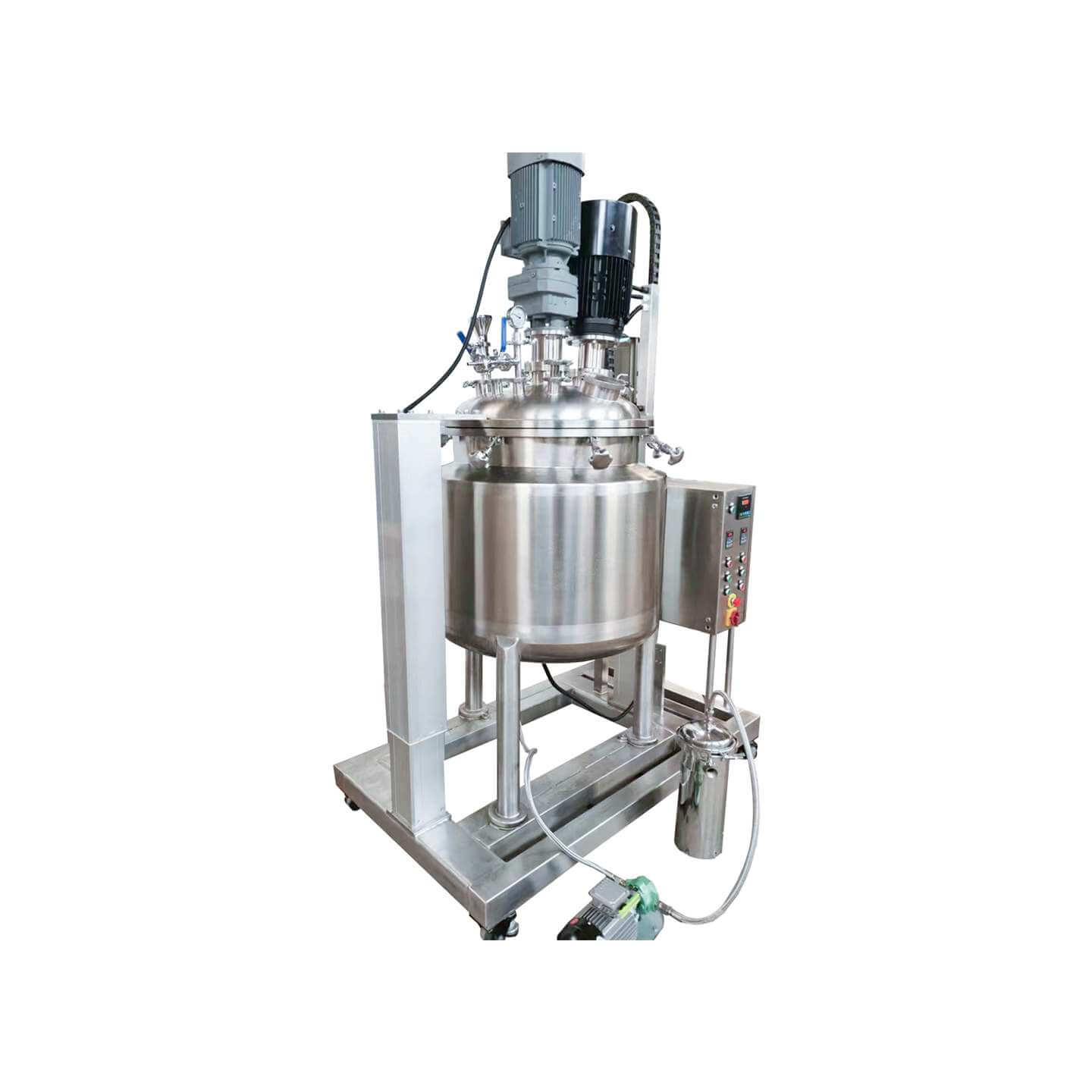

Laboratory Reactor
Laboratory reactor: used in the chemical industry, pesticide, paint, and other fields
Material
glass, stainless steel (316, 304), carbon steel, others
Capacity (L)
10-10000+
Mixing system
anchor, paddle, frame and others
Heating system
electric heating, oil heating and others
The laboratory reactor is small in size, beautiful in appearance, light, and fast in installation. It is composed of a pot body, pot cover, stirrer, jacket, support and transmission device, shaft sealing device, etc. The type of stirring device, rotation speed, sealing structure, heating method, etc. are produced.
Request a quoteLab reactors are widely used in medicine, the chemical industry, food, natural condiments, food additives, the light industry, scientific research units, and other industries. Used to complete vulcanization, nitration, hydrogenation, hydrocarbonization, polymerization, condensation, and other processes. On the premise of thorough mixing of the reaction materials, stirring devices are required for physical change processes such as heating, cooling, liquid extraction, and gas absorption to achieve good results.
Lab reactors react under certain process conditions (temperature, medium, etc.) to convert original materials into target materials. At the same time, as the temperature changes, two or more materials in the lab reactor are stirred and mixed under the drive of the stirrer, and physical or chemical reactions occur.

Advantages of lab reactors
Lab reactors are suitable for dissolving or reacting organic or inorganic substances, ores, and other samples with strong acid or alkali under high temperatures (<200°C) and high-pressure conditions. Its advantages are as follows:
1. Unique sealing method
In lab reactors, the thermal expansion coefficient of the PTFE lining in the dissolution bottle is larger than that of the bottle shell. When the kettle body is heated or cooled, the PTFE is prone to relaxation and leakage. In order to avoid this phenomenon, all dissolution bottles of lab reactors are equipped with load-bearing spring covers. This spring cover can continuously maintain the pressure on the sealing surface during the entire operation.
2. Strong corrosion resistance
The bottle bladder of the lab reactor is made of PTFE material, which can resist corrosion by various strong acids and alkalis. As a result, ores, glass, and other inorganic materials and organic materials can be quickly dissolved in strong acid and strong alkali solutions.
3. Convenient operation
The lab reactor uses a unique wrench, which can easily and quickly open and tighten, making it easy to operate.
4. Speed up the analysis process
The lab reactor maintains strong acids and alkalis at a temperature above the boiling point in a simple manner. Compared with dissolving in an open container at normal temperature and pressure, it speeds up the dissolution of samples and shortens the progress time of the operation.
-14.jpg)
Characteristics of lab reactors
1. The lab reactor is made of Hastelloy material, and all parts in contact with materials are made of Hastelloy, including each valve and pipeline;
2. It adopts a needle valve with a reciprocating switch structure, which is durable and has reliable sealing. All types of valves are properly installed, with smooth discharge and no dead ends;
3. It adopts a quick-opening structure and has functions such as the kettle body lowering and dumping mechanism;
4. Set the lower discharge valve head to reduce the number of lid openings and facilitate discharging. The lower discharge valve is a downward expansion valve, so there is no dead corner for mixing;
5. The parts of the lab reactor are reasonably laid out, the structure is compact, and the installation and operation are relatively convenient;
6. The safety valve adopts a bursting diaphragm, which has a small bursting value error, fast instantaneous exhaust speed, and is safe and reliable;
7. A pipe-type valve is installed at the feed port to facilitate feeding. The pipe outside the spare port is bent at about 120 degrees to facilitate the connection of hoses and other equipment;
8. Equipped with a pressure backup valve, which can adjust the pressure from 1 to 5 MPa, so that the pressure in the lab reactor can be controlled and balanced.
When the lab reactor is in operation or after the experiment, it is strictly forbidden to disassemble it under pressure, and it is strictly forbidden to work under overpressure or overtemperature conditions. Regularly test various instruments and blasting relief devices to ensure their accurate and reliable operation. If a measuring instrument breaks, it usually breaks on the front and rear sides of the glass. Therefore, experimenters should not stand in these potentially dangerous places when using lab reactors. The working environment of lab reactors should meet the requirements of safety technical specifications.




